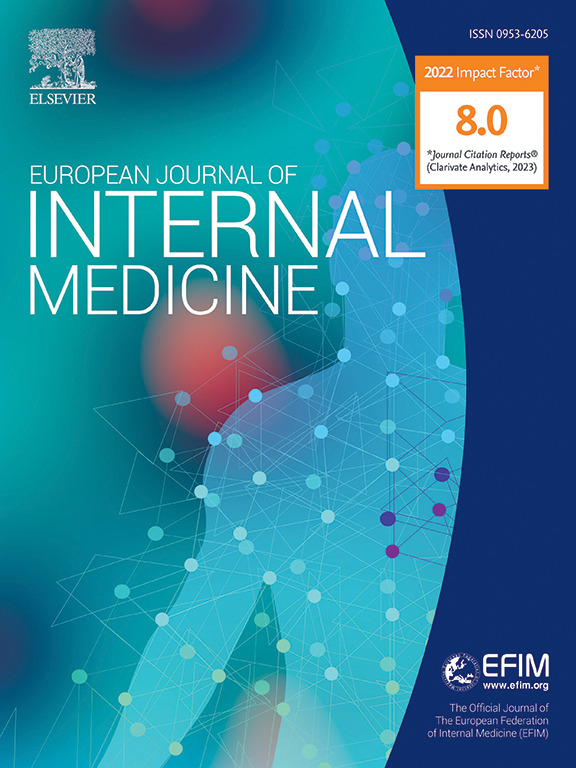与左心疾病相关的肺动脉高压:表型与治疗
IF 6.1
2区 医学
Q1 MEDICINE, GENERAL & INTERNAL
引用次数: 0
摘要
与左心疾病相关的肺动脉高压(PH-LHD)是指肺动脉高压的一种临床和血流动力学症状,与一组影响左心室和左心房任何部分的异质性疾病相关。PH-LHD 是 PH 最常见的病因,占诊断病例的 65-80%。根据疾病的血流动力学阶段,PH-LDH 可分为三个亚组:毛细血管后 PH、孤立毛细血管后 PH 和合并毛细血管前 PH(CpcPH)。在 PH-LDH 中,一些参与调节血管张力的信号通路出现功能障碍,包括一氧化氮、MAP 激酶和内皮素-1 通路。这些通路与 PH 组 1 中发生改变的通路相同,但 PH-LHD 可通过作用于肺循环的特定药物进行治疗。在本手稿中,我们介绍了现有临床试验的最新进展,这些临床试验调查了 PAH 特异性药物以及对心力衰竭和 PH-LHD 患者有效的药物的安全性和有效性。我们还讨论了 PH-LHD 的不同表型,以及可能参与该疾病病理生理学的分子靶点和信号通路。最后,我们将提到一些可用于治疗这种 PH 的新兴疗法。本文章由计算机程序翻译,如有差异,请以英文原文为准。
Pulmonary hypertension associated to left heart disease: Phenotypes and treatment
Pulmonary hypertension associated to left heart disease (PH-LHD) refers to a clinical and haemodynamic condition of pulmonary hypertension associated with a heterogeneous group of diseases affecting any of the compartments that form the left ventricle and left atrium. PH-LHD is the most common cause of PH, accounting for 65–80 % of diagnoses. Based on the haemodynamic phase of the disease, PH-LDH is classified into three subgroups: postcapillary PH, isolated postcapillary PH and combined pre-postcapillary PH (CpcPH). Several signaling pathways involved in the regulation of vascular tone are dysfunctional in PH-LHD, including nitric oxide, MAP kinase and endothelin-1 pathways.
These pathways are the same as those altered in PH group 1, however PH-LHD can heardly be treated by specific drugs that act on the pulmonary circulation.
In this manuscript we provide a state of the art of the available clinical trials investigating the safety and efficacy of PAH-specific drugs, as well as drugs active in patients with heart failure and PH-LHD. We also discuss the different phenotypes of PH-LHD, as well as molecular targets and signaling pathways potentially involved in the pathophysiology of the disease. Finally we will mention some new emerging therapies that can be used to treat this form of PH.
求助全文
通过发布文献求助,成功后即可免费获取论文全文。
去求助
来源期刊
CiteScore
9.60
自引率
6.20%
发文量
364
审稿时长
20 days
期刊介绍:
The European Journal of Internal Medicine serves as the official journal of the European Federation of Internal Medicine and is the primary scientific reference for European academic and non-academic internists. It is dedicated to advancing science and practice in internal medicine across Europe. The journal publishes original articles, editorials, reviews, internal medicine flashcards, and other relevant information in the field. Both translational medicine and clinical studies are emphasized. EJIM aspires to be a leading platform for excellent clinical studies, with a focus on enhancing the quality of healthcare in European hospitals.

 求助内容:
求助内容: 应助结果提醒方式:
应助结果提醒方式:


